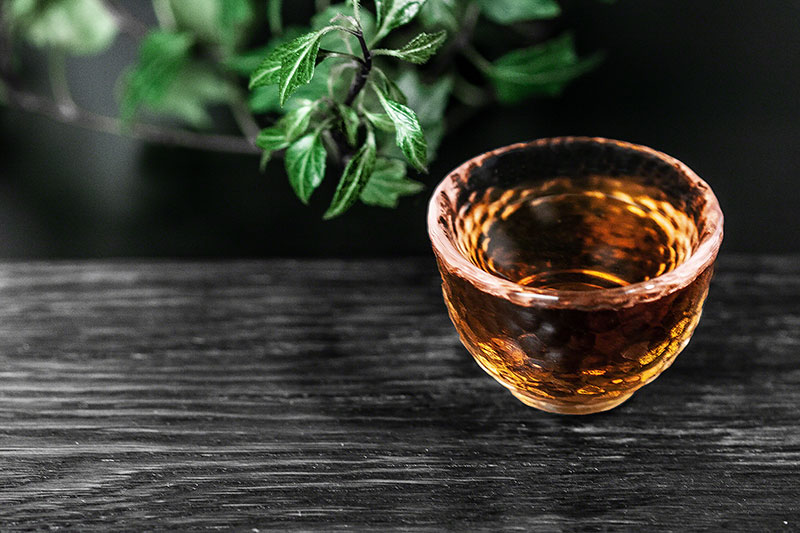The best cups of tea don’t just happen. They require time, patience and skills. The only way to get the flavorful fresh and enjoyable cup of tea is practice. And having the right loose leaf tea at hand. Once you master the basics, don’t be afraid to experiment with a leaf to water ratio, types of water and teaware.
General guidelines for brewing the best cup of tea let you understand each type better, but the final brewing method should be adjusted to satisfy your needs and taste buds.
Here are the basic guidelines to get you started.
Make enough time to brew tea correctly
Brewing and drinking tea has always been a social event, not something that was done in a rush. Rushing might cause many mistakes and result in a terrible cup of tea. Enjoy the smell of the leaves too. Brewing tea should be enjoyable, fun and calming.
The ideal time: 30 minutes
Choose the right teaware
Brewing tea using wrong teaware might influence both flavor and color. In ideal circumstances you might want to use different teapots for different teas. If you want to get only one teapot for all types, opt for the smaller one. Keep in mind that 10 oz teapot will not give exactly 10 oz of tea, but it will be enough for tea for two.
The ideal teapot: 200 ml
Get a digital scale and thermometer
Both water temperature and the amount of leaves are crucial for a perfect cup. Get a small digital scale for the first few months of brewing. It will help you understand the amounts better. Thermometer comes in handy for checking if the temperature is not too high or too low. With time and practice you will know how to guess them both.
The ideal scale: Digital pocket scale and kitchen thermometer
Choose the right water
The best water for brewing tea is usually spring water. Tap water might be a good option for some tea types, but avoid it when brewing gentle and delicate tea like Organic Dragon Well or Silver Needle. Avoid distilled water too. It’s too flat and flavorless for a decent cup of tea, let alone a perfect one.
The ideal water: bottled spring water
Boil the water and preheat the teaware
Always use freshly boiled water (and always boil fresh water!). Preheat the teapot by pouring hot water in and out before adding loose leaf tea. This step will make your teapot more brewing friendly, intensify the scent of the leaves and provide optimal starting temperature for brewing.
Have all utensils ready
Prepare everything you need before boiling water. Searching a strainer (if you need one) when the tea is already steeping is something you should avoid.
The ideal utensils: strainer, tea tray, tea scoop, teapot and tea cup/s
Use enough leaves
Not enough leaves will give an uninteresting weak infusion, and too much could cause tea to become bitter. If you are unsure, using less leaves is always a better option. Even if brewing goes wrong, at least you won’t be wasting too much leaves.
The ideal amount of leaves: 3-5 grams per 200 ml for western brewing and 3-7 grams for eastern brewing
Make sure the temperature is correct
No real tea should ever be brewed using 100 °C. Lower temperatures will extract more sweetness, and high temperature more astringency and bitterness. The reason lies in caffeine, catechins and tannins, all requiring hot water for the best extraction. It’s better to brew a weaker cup first then adjust the temperature if needed.
The ideal temperature: 95°C for black tea, 80°C for green tea, 90°C for white tea and 80-90°C for oolong 100°C for herbal and fruit tea. Use slightly cooler water for blends with orange and lemon peel.
Check the time
Never over-brew your tea. It’s better to use a few short infusions than one long one.
Ideal steeping time: 1-2 minutes for green tea, 3-5 for black tea, 3-5 for white and oolong tea for western brewing and 1-1.5 for green, a few seconds for oolong, 30-60 second for black for eastern brewing
 (Source: Tea Bespoke ©)
(Source: Tea Bespoke ©)
Wash your utensils
Always use clean and dry utensils. Avoid using detergents as much as possible. If you are using only one teapot for all tea types, make sure there is no residue left from a previous brewing. Flavored tea leaves might even leave a faint scent after washing, so pay extra attention when brewing delicate teas in the same teapot.
The ideal option: Right after brewing with water only
Best teas for practicing
Some teas are more forgiving for brewing mistakes. Semi-ball shaped oolong teas like Buddha Hand or Iron Goddess of Mercy are easy and fun to brew, and may be a good starting point in trying to understand tea better. Genmaicha and sencha both offer great results with little time investment, while Yunnan Golden Buds and Golden Monkey Paw won’t be bitter even if over-brewed. The most forgiving and easy to brew herbal tea is rooibos—that will stay tasty even if you steep it for 20 minutes.



Leave a Reply Cancel Reply